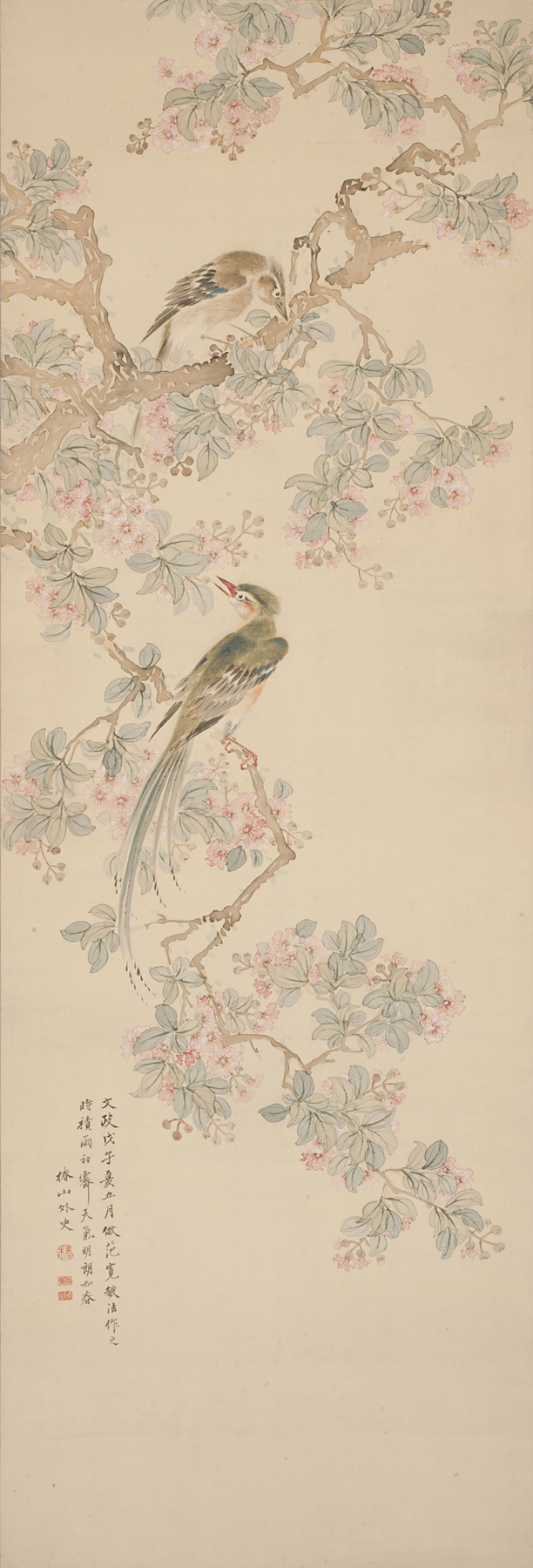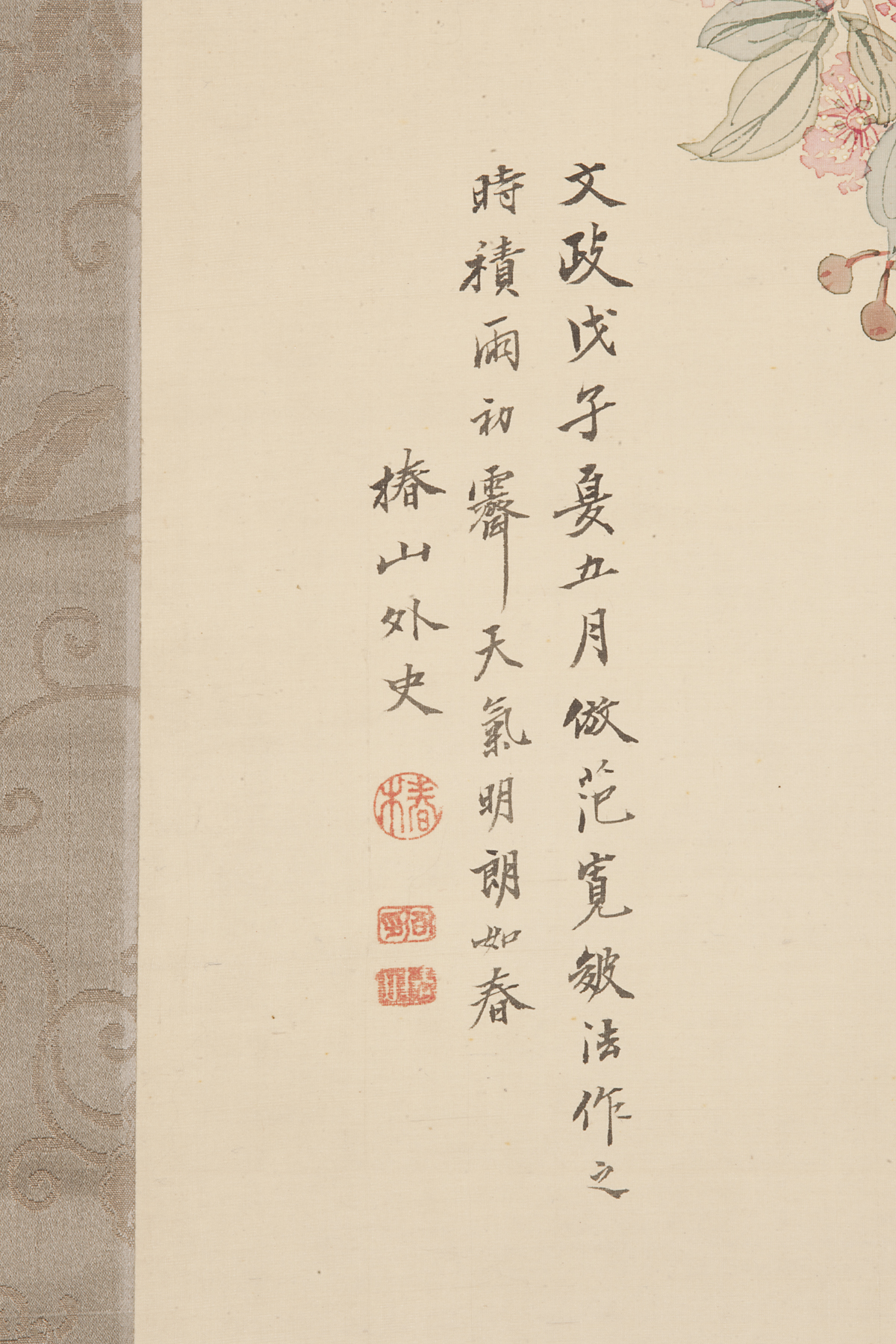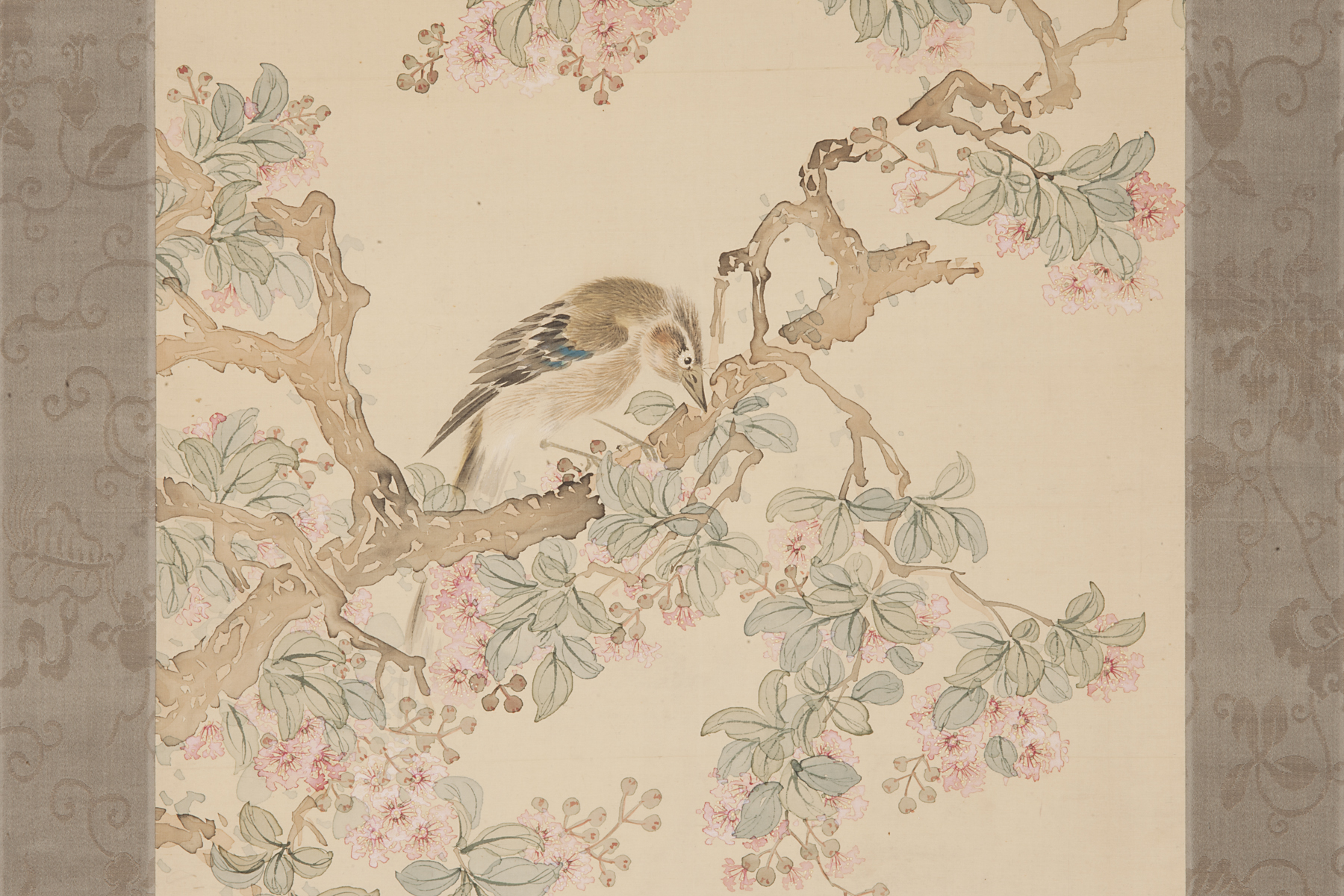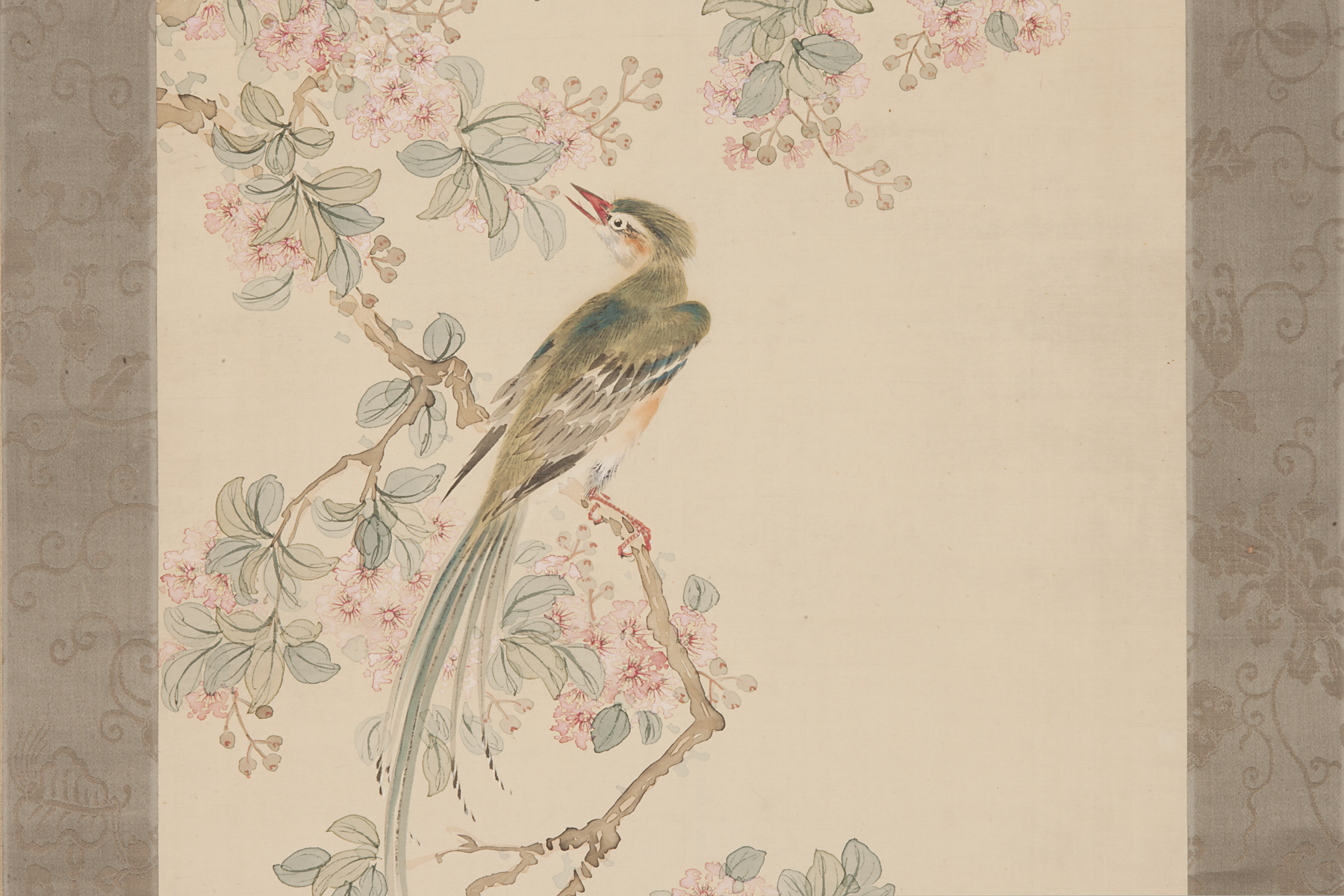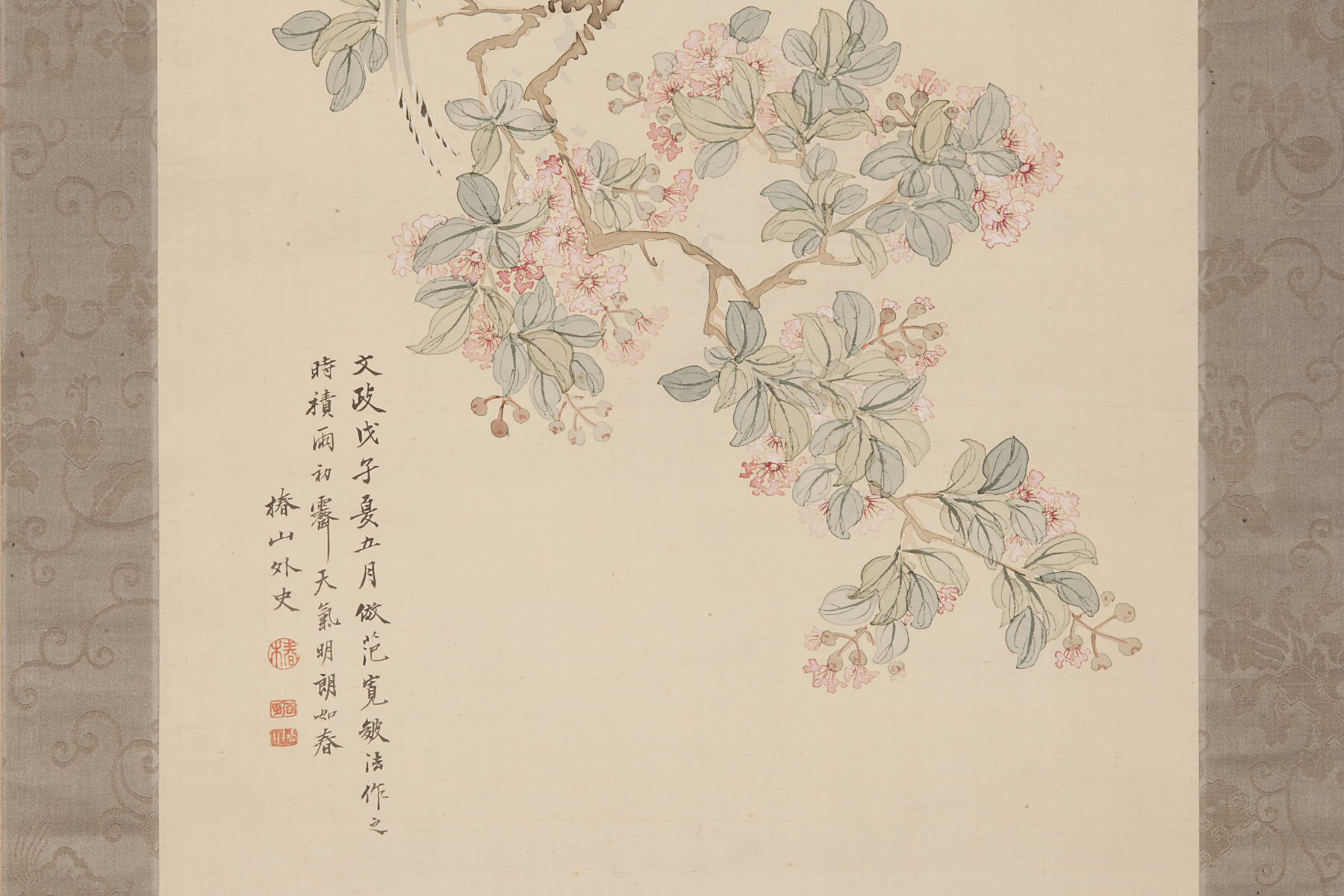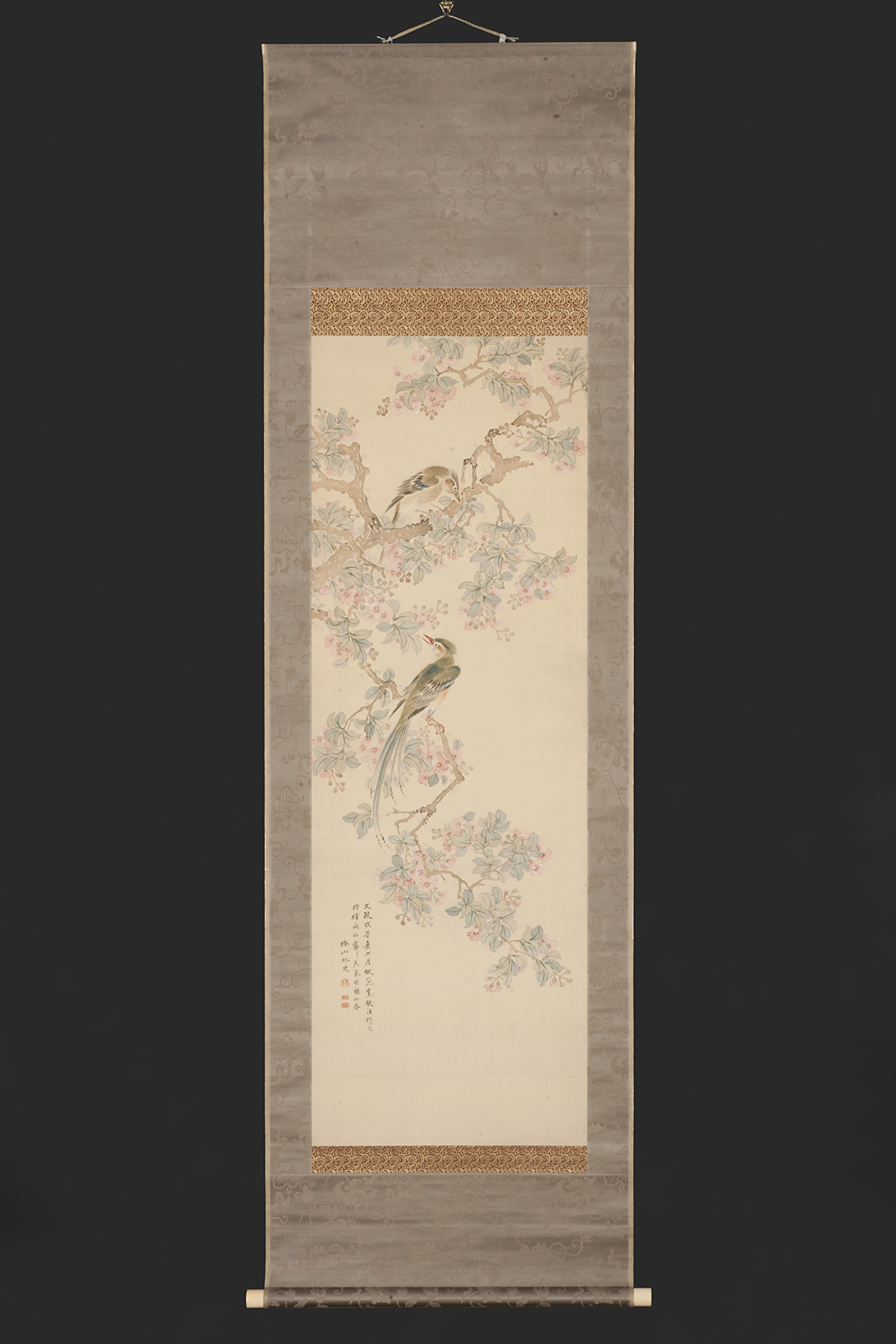Birds Amid Cherry Blossoms, Tsubaki Chinzan
Artwork Overview
Tsubaki Chinzan, artist
1801–1854
Birds Amid Cherry Blossoms,
1828, Edo period (1600–1868)
Where object was made: Japan
Material/technique: color; ink; silk
Dimensions:
Image Dimensions Height/Width (Height x Width): 124 x 42.1 cm
Image Dimensions Height/Width (Height x Width): 48 13/16 x 16 9/16 in
Mount Dimensions (Height x Width x Depth): 190 x 56.4 cm
Mount Dimensions (Height x Width x Depth): 74 13/16 x 22 3/16 in
Roller Dimensions (Width x Diameter): 60.6 cm
Roller Dimensions (Width x Diameter): 23 7/8 in
Image Dimensions Height/Width (Height x Width): 124 x 42.1 cm
Image Dimensions Height/Width (Height x Width): 48 13/16 x 16 9/16 in
Mount Dimensions (Height x Width x Depth): 190 x 56.4 cm
Mount Dimensions (Height x Width x Depth): 74 13/16 x 22 3/16 in
Roller Dimensions (Width x Diameter): 60.6 cm
Roller Dimensions (Width x Diameter): 23 7/8 in
Credit line: Gift of Mr. and Mrs. Mitchell Hutchinson
Accession number: 1988.0068
Not on display
If you wish to reproduce this image, please submit an image request
